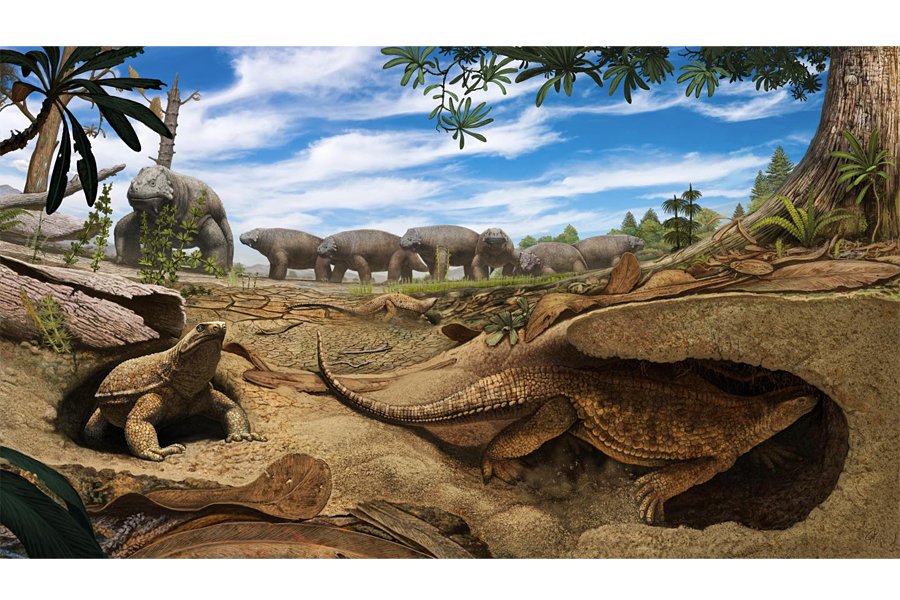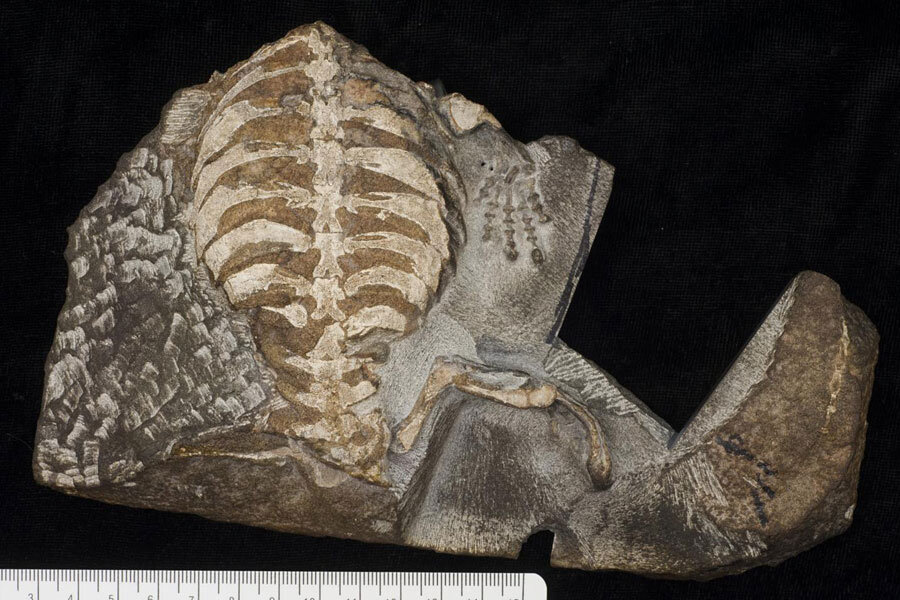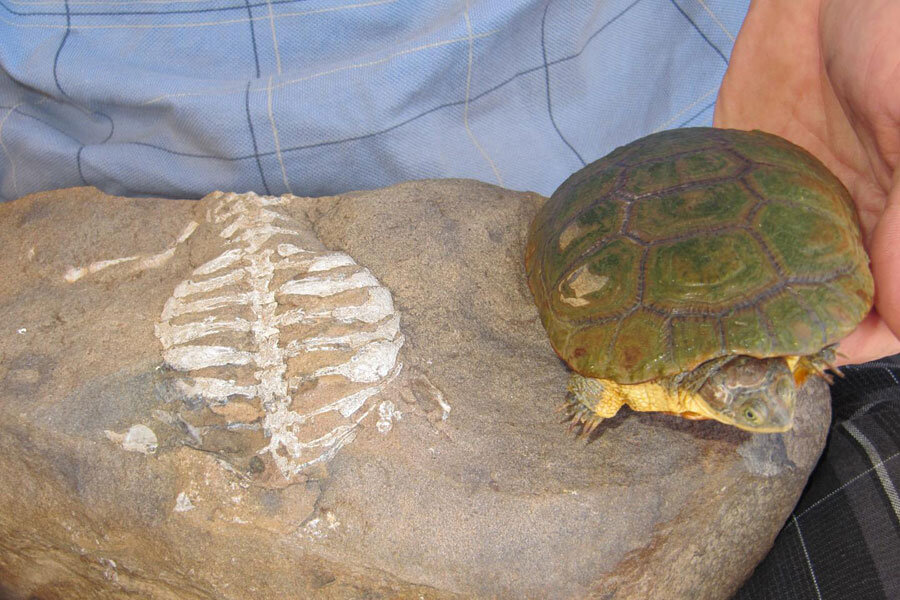Turtle shells might not have evolved for protection, say scientists
Loading...
When it comes to evolution, things aren't always what they seem.
Today, the turtle's iconic shell forms a nearly impenetrable shield for the animal. After millions of years of turtles, it may seem as if it's always been that way. But the turtle's shell may not have actually evolved for protection.
Instead, the distinctive structure may have initially been an adaptation to help proto-turtles burrow underground, according to a paper published Thursday in the journal Current Biology.
"Why the turtle shell evolved is a very Dr. Seuss-like question and the answer seems pretty obvious – it was for protection," lead author Tyler Lyson, curator of vertebrate paleontology at the Denver Museum of Nature and Science, said in a press release. But it turns out, "the earliest beginnings of the turtle shell was not for protection but rather for digging underground to escape the harsh South African environment where these early proto turtles lived."
Broad ribs that later evolved into turtle shells likely helped the South African turtle-ancestor Eunotosaurus africanus stabilize its body as it dug into the ground with its front legs.
"A stable base is needed to counteract the force of the digging mechanism, in this case the forelimbs," Dr. Lyson explained to Seeker, a news site owned by Discovery Digital Networks. "Digging animals thus have adaptations to dig burrows (large hands, large claws, strong forelimbs, etc.) and adaptations to deal with counteracting the digging mechanism force."
Previous research had already suggested that broadening ribs in turtle-ancestors eventually evolved into the protective shell that turtles have today. But ribs would have provided little protection at first, so Lyson puzzled over what purpose these broadened ribs could have served for the proto-turtles.
Lyson and colleagues studied 47 fossils of Eunotosaurus in an effort to determine what exactly these ancient animals were doing with those wide ribs.
At the center of this collection was a fossil discovered by Kobus Snyman, a South African boy who was eight years old when he discovered the 260-million-year-old specimen. The boy found the proto-turtle fossil on his father's farm on the Western Cape of South Africa before taking it to the Fransie Pienaar Museum in Prince Albert.
Without this specimen, "This study would not have been possible," study co-author Bruce Rubidge of the University of Witwatersrand, in Johannesburg said in a press release.
The boy had found a fossil of the entire body of the proto-turtle, including its hands and feet. And these body parts proved crucial to Lyson's study of Eunotosaurus.
It turns out, the prehistoric animal was built like a digger.
The front limbs of Eunotosaurus were thicker, with larger feet than its hind ones. Not only did the animal have particularly sturdy forelimbs, Lyson spotted big claws good for breaking up dirt and features on the shoulder blades and forearms that suggest this proto-turtle had strong triceps.
"Eunotosaurus was clearly digging," Rainer Schoch of the State Museum of Natural History in Stuttgart, Germany told the Atlantic. "The big question is whether the early turtles with partially formed shell – Pappochelys and Odontochelys – were too. This is important to know because they represent the stages in which the shell actually formed."
If Lyson is right, the turtle's shell might be a good example of exaptation, when a trait is co-opted for a new purpose throughout evolution.










